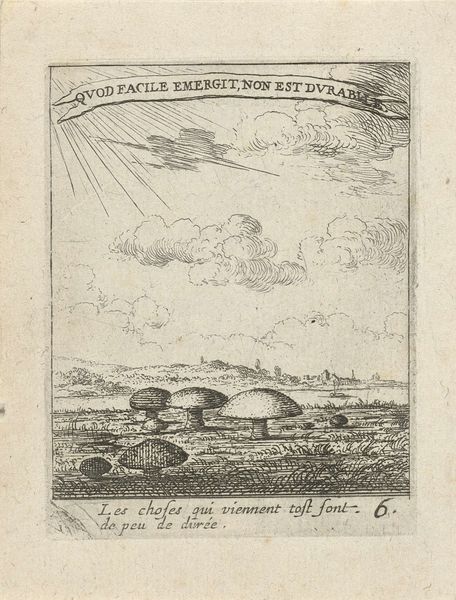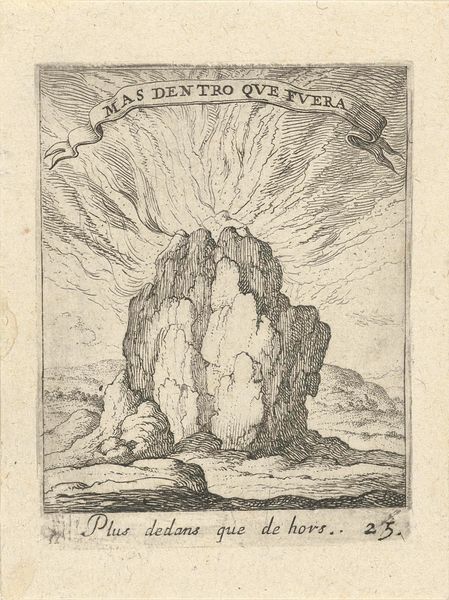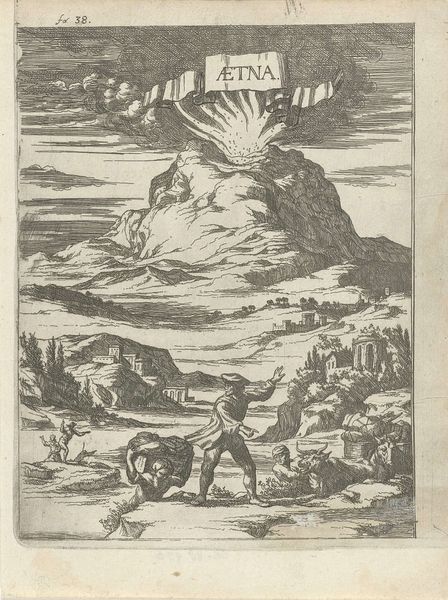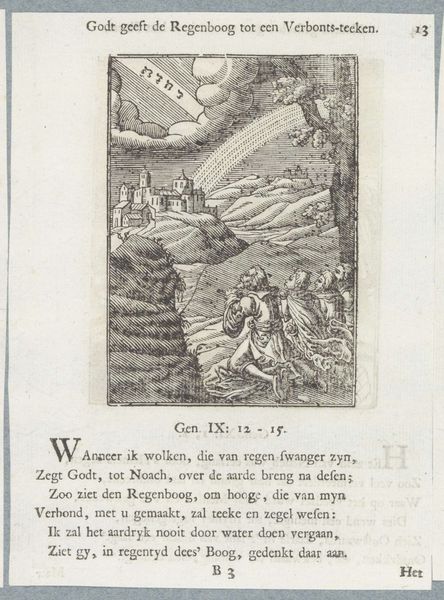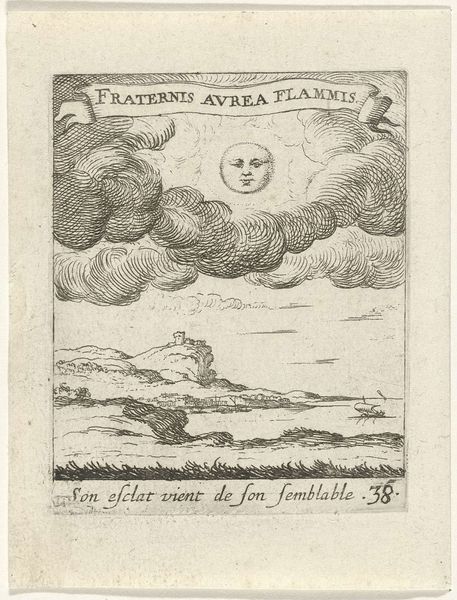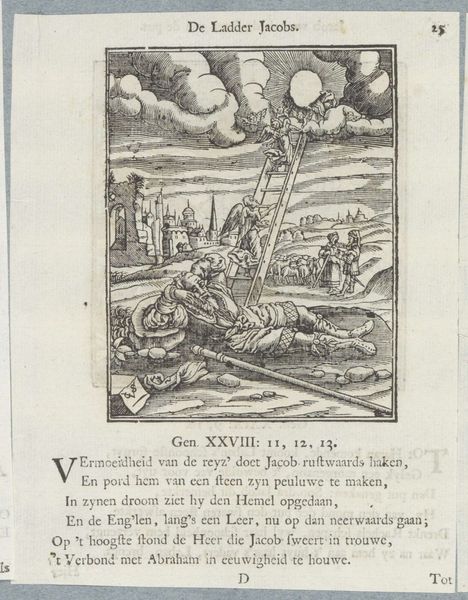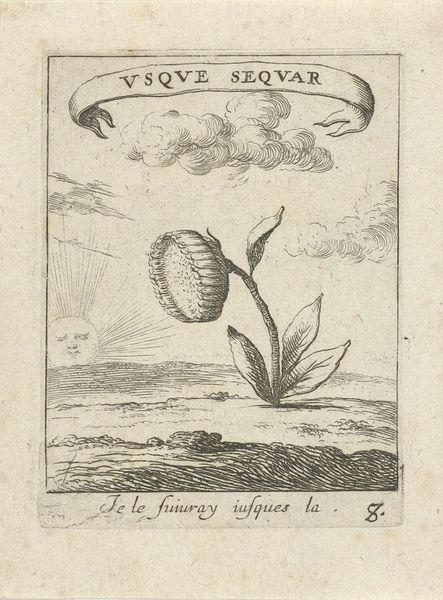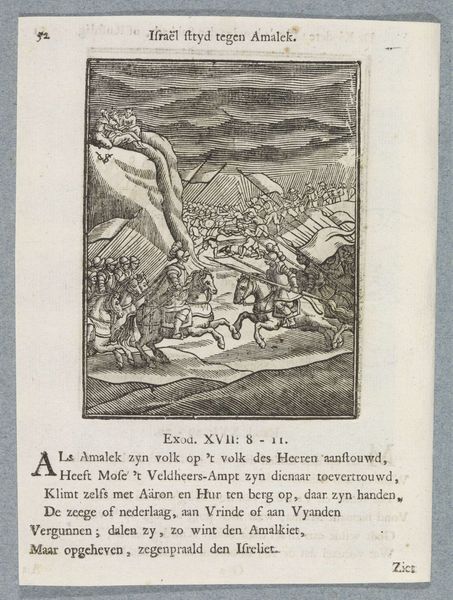
print, engraving
# print
#
landscape
#
line
#
engraving
Dimensions: height 84 mm, width 69 mm
Copyright: Rijks Museum: Open Domain
This landscape with a star was made by Albert Flamen sometime in the 17th century, using a technique called etching. Etching, a printmaking process, involves covering a metal plate with a waxy, acid-resistant substance. The artist then scratches an image into this coating, exposing the metal underneath. When the plate is dipped in acid, lines are etched into the exposed areas. The plate is then inked, and the ink held in the etched lines transfers to paper when printed. What I find interesting here is how the process influences the final look. See how the lines create the cloudy sky, the rolling hills, and the radiant star. These lines weren't drawn directly, but rather created through a chemical reaction. It's a blend of craft, skill, and industrial processes, all reflecting the period's growing engagement with science and technology. The labor involved in creating the etching plate and pulling the prints speaks to the changing social and economic landscape of the time.
Comments
No comments
Be the first to comment and join the conversation on the ultimate creative platform.

